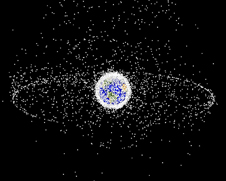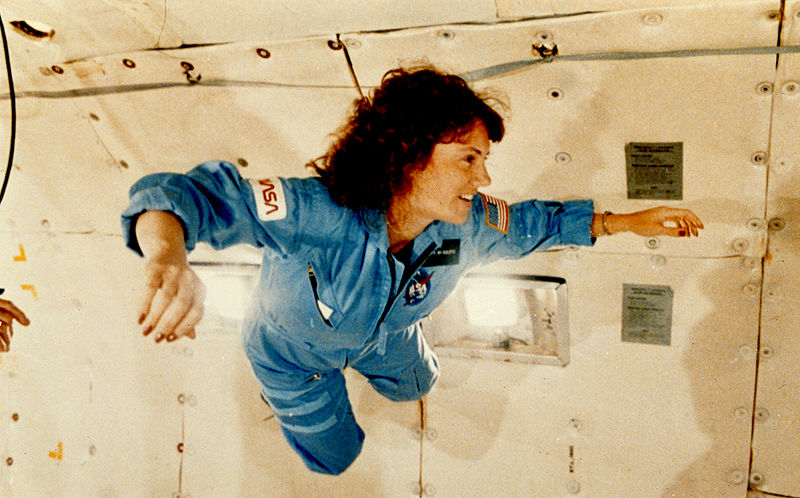January 31, 2011 Vol. 4, Issue 1
A recent RAND study recommends the development of remediation methods in addition to mitigation processes for orbital space debris based on lessons from nine parallel problem areas.

Computer-generated image of objects in Earth orbit that are currently being tracked. Photo Credit: NASA/Johnson Space Center
There are over 20,000 softball-sized or larger manmade objects orbiting the Earth. The numbers grow by four orders of magnitude if the count includes smaller objects the size of a dot. A recent report by the RAND Corporation seeks to provide decision-makers insight and context about the problem of orbital space debris by comparing it to similar problems outside of the aerospace industry. The study identified nine “orbital debris-like” problems: acid rain, airline security, asbestos, chlorofluorocarbons, hazardous waste, oil spills, radon, spam, and U.S. border control.
These comparable problems share the following behavioral norms with orbital space debris:
- Past and present behavioral norms do not address the problem in a satisfactory way.
- The risk of collateral damage is significant if the problem remains ignored.
- There will always be “rule-breakers.”
- The problem will most likely never be solved because the root cause is difficult to eliminate.
The report focuses on lessons from mitigation (actions designed to lessen the severity of a problem) and remediation (actions taken to reverse an undesirable event after it has already occurred). According to the authors, the space community views orbital debris largely as a mitigation problem. However, they note, “…while everyone in the space community certainly agrees that orbital debris poses a risk, a lack of government and private industry funding for this effort suggests that the perception of risk has not yet crossed a critical threshold that would prompt demands for remediation.”
The report proposed four considerations regarding the development of pathfinder remediation possibilities.
“A community must be prepared for ‘shocks’ or catastrophic events.” Catastrophic events have occurred such as the Iridium/Cosmos collision. On-orbit collisions are likely to continue.
“Remedies must be designed and tested to work under actual operating conditions.” The Deepwater Horizon oil spill showed that the remedies used during the first 40 days were insufficient because they had never been tested or proven to work in deepwater drilling conditions. Understanding technology performance under real working conditions is crucial.
“One remedy is not good enough.” This is often seen in airline security, border patrol, and spam. All of these problems require multiple remedies to address the issue. Often, the development of one remedy will lead to alternative or tangential methods.
“When a problem’s effects are not directly observable, a community is likely to underestimate the risk posed by the effects.” The damage of exposure to asbestos and radon are generally invisible, with problems appearing several decades after initial exposure. This is also true of orbital debris–neither the creators of the debris nor those who might be harmed by it can easily observe the potential threat.
The report recommends that stakeholders must continually reassess their situational awareness, use the Superfund as a model for orbital debris cleanup, and develop mitigation incentive structures for the short term. More broadly, it concludes that the space debris community will not be able to implement mitigation or remediation strategies until stakeholders agree on an acceptable level of risk tolerance.






